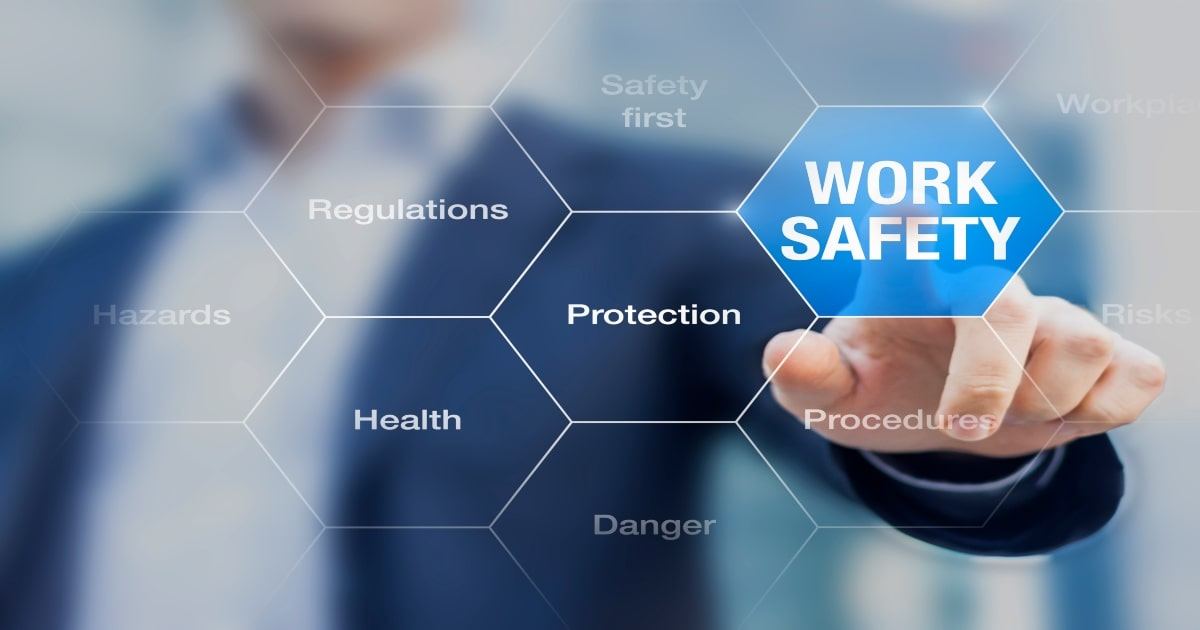Table of Content
Try Vizitor for Free!

Thu, Mar 13, 2025
Read in 5 minutes
Workplace security is the foundation of a safe and productive environment. With cyber threats and physical risks on the rise, businesses must implement comprehensive security strategies to protect employees, data, and assets. This guide explores the best practices in workplace security, covering everything from access control systems to cybersecurity awareness—ensuring a safe workplace for all.
What is Workplace Security & Why Does It Matter?
Workplace security encompasses a wide range of measures designed to protect your people, assets, and information from harm. It’s a two-pronged approach, addressing both physical security (protecting physical assets and personnel) and digital security (safeguarding data, systems, and intellectual property).
Here’s a breakdown of what it entails:
Physical security:
This includes securing your building with access control systems (key cards, security cameras), implementing safety protocols (emergency exits, fire drills), and maintaining a well-lit and organized workspace.
Digital security:
This involves protecting your data through strong password management, encryption, firewalls, and regular security updates. Additionally, fostering a culture of cybersecurity awareness among employees is crucial.
What is Workplace Security & Why Does It Matter?
Workplace security encompasses a broad range of measures aimed at protecting employees, business assets, and sensitive information. It involves both:
- Physical Security – Securing offices, restricting access, and implementing surveillance.
- Digital Security – Preventing cyberattacks, securing networks, and training employees on cybersecurity best practices.
Key Components of Workplace Security
Physical Security
- Access control systems (key cards, biometric readers, security cameras).
- Emergency preparedness (fire drills, emergency exits, incident response plans).
- Theft prevention measures (asset tracking, security patrols).
Digital Security
- Multi-factor authentication (MFA) and strong password policies.
- Encryption and firewall protection.
- Regular security audits and cybersecurity awareness training.
To build an effective workplace security strategy, businesses must first identify potential threats.
Workplace Security Threats: Common Risks to Watch For
Workplace security threats can come from both physical and digital sources. Identifying these risks early helps prevent costly incidents.
Common Workplace Security Risks
Physical Security Risks
Unauthorized access to restricted areas
Theft of equipment, confidential documents, or employee belongings
Workplace violence or insider threats
Cybersecurity Risks
Phishing attacks targeting employees’ login credentials
Malware, ransomware, and hacking attempts
Insider threats caused by human error or negligence
Social Engineering Attacks
Hackers impersonating IT support to steal login credentials
Fake emails tricking employees into transferring funds or disclosing sensitive information
Recognizing these risks is the first step toward implementing stronger workplace security policies.
Security Technologies Transforming the Modern Workplace
Businesses are integrating advanced security technologies to enhance workplace protection. Here are some of the latest innovations:
AI-Powered Surveillance Systems – Detects suspicious behavior and alerts security teams in real-time.
Facial Recognition Access Control – Ensures only authorized personnel can enter restricted areas.
Cloud-Based Visitor Management Systems – Automates visitor check-ins, tracks guest movements, and enhances security monitoring.
IoT-Enabled Smart Security Devices – Includes smart locks, motion sensors, and remote security monitoring.
Tools and Strategies for a Secure Workplace
1. Access Control Systems
Use key cards, biometric readers, or ID badges to restrict access to sensitive areas.
2. Security Cameras and Alarm Systems
Strategically place cameras and motion-activated alarms to deter theft and suspicious activity.
3. Cybersecurity Training for Employees
Train employees to identify phishing scams, use strong passwords, and follow security protocols.
4. Visitor Management System
Digitally track visitor check-ins for better security control and regulatory compliance. Try Free Trial of Vizitor Now!
5. Conduct Regular Security Audits
Perform security assessments to detect vulnerabilities before threats arise.
Building a Culture of Workplace Security
Technology alone isn’t enough. Businesses must foster a security-first mindset among employees.
How to Build a Security-Focused Workplace Culture
Leadership Buy-In – When executives prioritize security, employees follow suit.
Encourage Open Communication – Employees should feel comfortable reporting suspicious activity.
Conduct Security Drills & Mock Attacks – Simulated threats help employees practice incident response protocols.
Regularly Update Security Policies – Keep employees informed about new threats and security best practices.
Additional Resources:
Society for Human Resource Management (SHRM): https://www.shrm.org/
IBM Security: https://www.ibm.com/academic/topic/security
National Institute of Standards and Technology (NIST) Cybersecurity Framework: https://www.nist.gov/cyberframework
We hope this blog post empowers you to take action and prioritize workplace security in your organization. Remember, a secure workplace environment doesn’t just happen – it takes consistent effort and collaboration.
While we don’t offer specific products or services, we encourage you to explore the resources mentioned above and seek guidance from security professionals to develop a customized security plan that meets your organization’s unique needs.
FAQs
Q1: What is workplace security?
Workplace security refers to the measures and policies that protect employees, physical assets, and digital information from threats like theft, cyberattacks, and unauthorized access.
Q2: What are the key components of a workplace security strategy?
A strong workplace security strategy includes:
- Access control systems (key cards, biometric authentication)
- Cybersecurity measures (firewalls, password protection, phishing training)
- Visitor management systems (digital check-ins, ID verification)
- Security cameras and monitoring
Q3: How can businesses improve cybersecurity in the workplace?
To improve workplace cybersecurity:
- Use strong passwords and multi-factor authentication (MFA)
- Conduct regular security audits
- Train employees to recognize phishing attacks
- Encrypt sensitive data
Q4: What are the most effective workplace security tools?
The most effective workplace security tools include access control systems, security cameras, biometric authentication, and visitor management software.
Q5: How can small businesses improve security on a budget?
Small businesses can implement cost-effective security measures, such as strong password policies, cybersecurity training, and smart locks.










